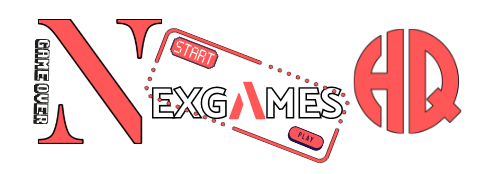
A Fun but Confusing Triple Decker
Hellcard
Platform: PC
Developer: Thing Trunk
Publisher: Skystone Games, Surefire.Games
Release date: February 1st, 2024
Price: $19.99 via digital download, $15.79 launch discount until February 15th
Availability: Steam

Thing Trunk’s Book of Demons was a really impressive first effort. The most obvious comparison would be to Diablo’s dungeon crawls, but there were a few unique twists to the hack-and-slash paradigm in this game. Creativity was rife, ranging from letting players choose how long a run would last to incorporating a card-based mechanic that made equipment and skill systems simpler.
And for the most part, Hellcard, the Warsaw-based studio’s sequel, is similar. According to Thing Trunk, this is only one more game in their ambitious seven-game papercraft-themed metaverse. Even if that’s an almost unnecessarily lofty objective, Hellcard doesn’t jeopardize the developer’s recent success.

The Typical Suspects
Indeed, after a year in Steam’s Early Access program, there are still a few persistent problems. However, astute design choices such as cooperative gameplay, a deft user interface, and a focus on accessibility make this a simple recommendation for lovers of card-based warfare. Furthermore, Hellcard doesn’t feel like a Slay the Spire clone, in contrast to many of its competitors.
When Hellcard first starts to descend through a twelve-floor dungeon, you can choose your character from four different fantasy archetypes. That isn’t meant to be a slight against Hellcard, despite the way it sounds. Rather, the Mage, Rogue, Tinkerer, and Warrior all function as one might anticipate, favoring either magical or physical attacks, melee or ranged combat, or conventional weaponry. This method helps to make up for the absence of a lengthy instruction. However, it appears that Thing Trunk anticipates some mental strain from its users.

Taking Over the Hordes
Runs throw you into a gladiatorial arena on a single screen with increasingly numerous and powerful monsters. Enemies are divided into close and far zones by a demarcated ring around which the battlefield is centered. Although your Warrior may deal some damage to enemies far away, the damage is multiplied by two for opponents close by. The opposite is true for the Rogue with the bow.
You will use your mana pool to play cards that deal various kinds of damage, as well as buffs, debuffs, and defensive shielding. The 400+ Hellcards in the game are thoughtfully designed and have mainly obvious features (although using the tinkerer’s tools effectively does take some expertise). In a similar vein, the game provides a clear indication of impending harm as well as the total shield your character has amassed. When creating a survival plan, it is quite helpful to know what attackers are going to attack based on the icons that are hovering over them.

Teamwork Is Necessary for Survival
Your allies will have access to their own decks when playing with online partners, and they will have the chance to expand and improve them throughout the game. However, Thing Trunk makes some wise choices when playing alone. Companion upgrades don’t get weighed down by the complexities of micromanagement because they happen automatically. You’ll still be making decisions in combat with a reduced hand, extending a deft mix of independence and timely pacing.
Collaboration is crucial, whether you’re playing with actual people or facing large crowds with your friends. Sometimes, as a group of enemies approaches, you can use one character to push a threat away and utilize another party member to take advantage of the opportunity to launch an AOE-attack. Naturally, Hellcard throws an expanding variety of complexities at you, such as foes that explode or those that may still cause damage even after they are eliminated in a single blow.

The Pleasures of Gathering Artifacts
These kinds of difficulties are only enjoyable, of course, provided you have an appropriate counter. Getting through Hellcard’s twelve-stage journey at the beginning is really challenging. Numerous powerful mid-bosses with enormous health pools will face you, and your heroes won’t have many opportunities to recover. Thankfully, you receive numerous rewards at the end of each game, allowing you to improve your deck. In the meantime, you can use early-game artifacts that provide your character a small statistical advantage thanks to metagame advancement.
However, this also implies that further runs may get tiresome. The length of each game—which can go on for almost an hour—is one of the issues. At the moment, profits may be hard to come by due to Hellcard’s balancing. Because of this, you’ll definitely need to set aside some time before being able to access the Tinkerer class or Endless Mode. The existence of modifications that raise a run’s difficulty can offer more punishment if you’re a masochist.

Hellcard was played on a PC using a review code that the publishers sent along.
Review Overview
Gameplay – 80%
Controls – 75%
Aesthetics – 70%
Content – 80%
Accessibility – 70%
Value – 80%
76%
GOOD!
Summary : Finding team cohesion in Hellcard’s turn-based battles may be interesting, whether you play with two online allies or by yourself. Before you reach the endgame, you’ll need to upgrade carefully and take use of every tiny edge possible, much like in many other card battle games. In this case, persistence turns out to be just as important as having a wise policy.
